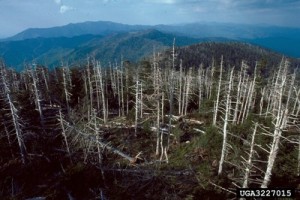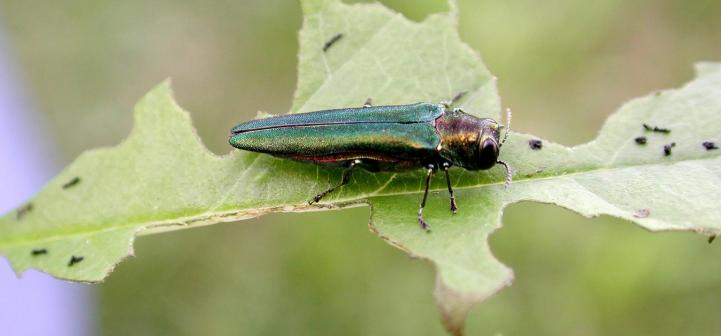An invasive species is a nonnative species (in any reproductive stage, including seed, egg, spore, or other propagule) whose introduction causes or is likely to cause economic harm, environmental harm, or harm to human health. These species grow and reproduce …
Chestnut Blight
Invasives in Southern U.S. Forests
The Effect of Climate Change on Gypsy Moth
Invasives in the Southwestern U.S.
Adapted from: Rogstad, Alix, Thomas DeGomez, and Carolyn Hull Sieg. 2007. Invasive plants in Arizona’s forests and woodlands. University of Arizona College of Agriculture and Life Sciences. Publication No. az1436
Competition for resources (moisture, light, nutrients) is fierce in the …
Invasive Species and Climate
Adapted from: Rogstad, Alix, Thomas DeGomez, and Carolyn Hull Sieg. 2007. Invasive plants in Arizona’s forests and woodlands. University of Arizona College of Agriculture and Life Sciences. Publication No. az1436
The U.S. Global Change Research Program (Carter, 2003) has described …
Dogwood Anthracnose
Written by D. Kennard for Forest Encyclopedia Network

Figure 1. Stem dieback from dogwood anthracnose (Discula destructiva). Photo by Robert A. Anderson, courtesy of forestryimages.org.
Dogwood anthracnose is a relatively new disease to North America. It was first …
Balsam Woolly Adelgid in Fraser Fir
Written by: D. Moorhead and G.K. Douce for Forest Encyclopedia Network

Figure 1. Balsam woolly adelgid was first found on Mount Mitchell, North Carolina, in 1957. The Fraser fir trees located at high elevations on Mount Mitchell have experienced heavy
Beech Bark Disease
Written by D. Kennard, D.J. Moorehead, C. Evans, and G.K. Douce for Forest Encyclopedia Network
…Emerald Ash Borer
Written by: G.K. Douce, C. Evans, and D.J. Moorhead for Forest Encyclopedia Network

Figure 1. A map showing the spread of emerald ash borer within the northeastern United States and southeastern Canada. http://www.emeraldashborer.info
Emerald ash borer, Agrilus planipennis, is …

